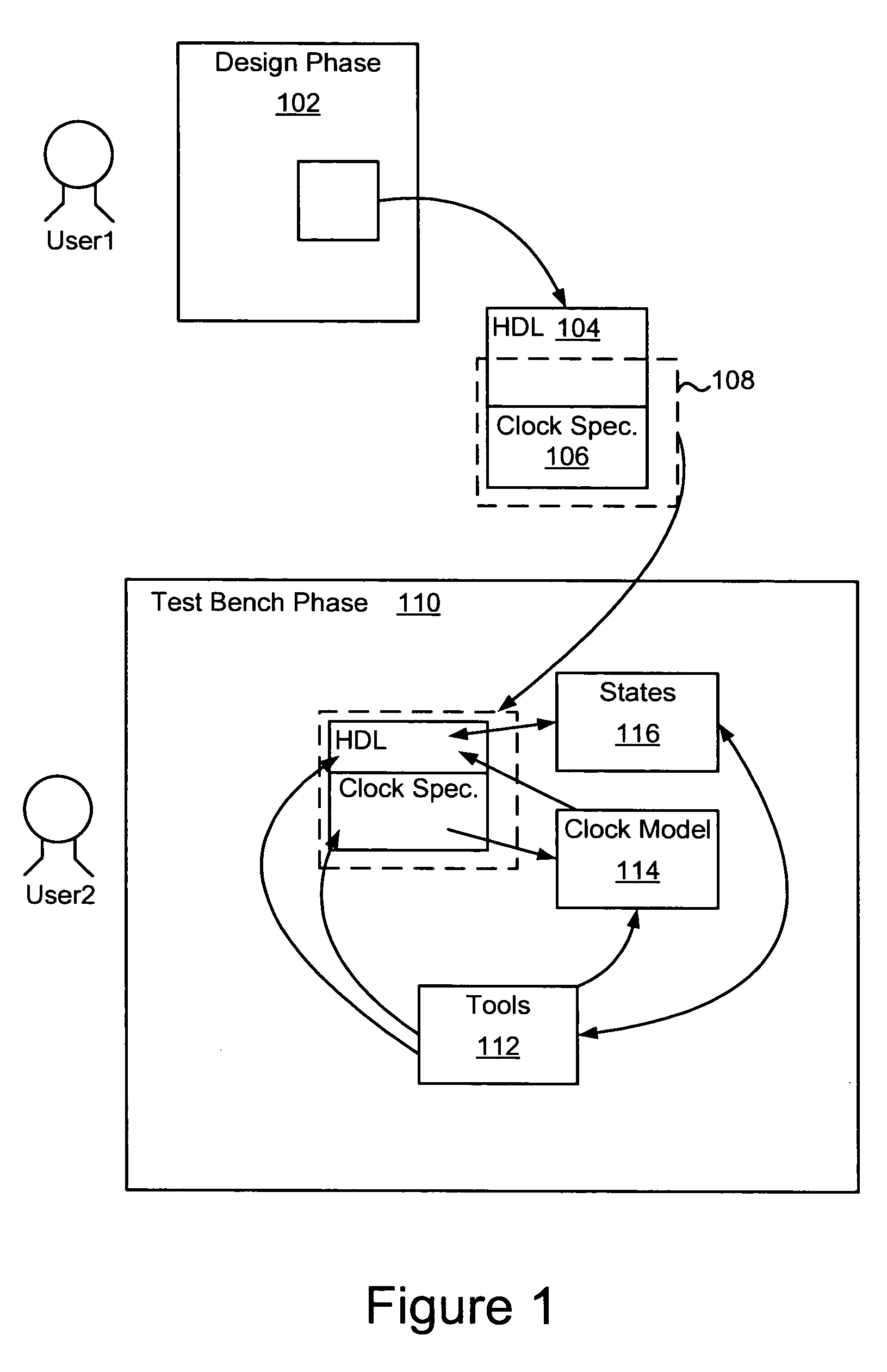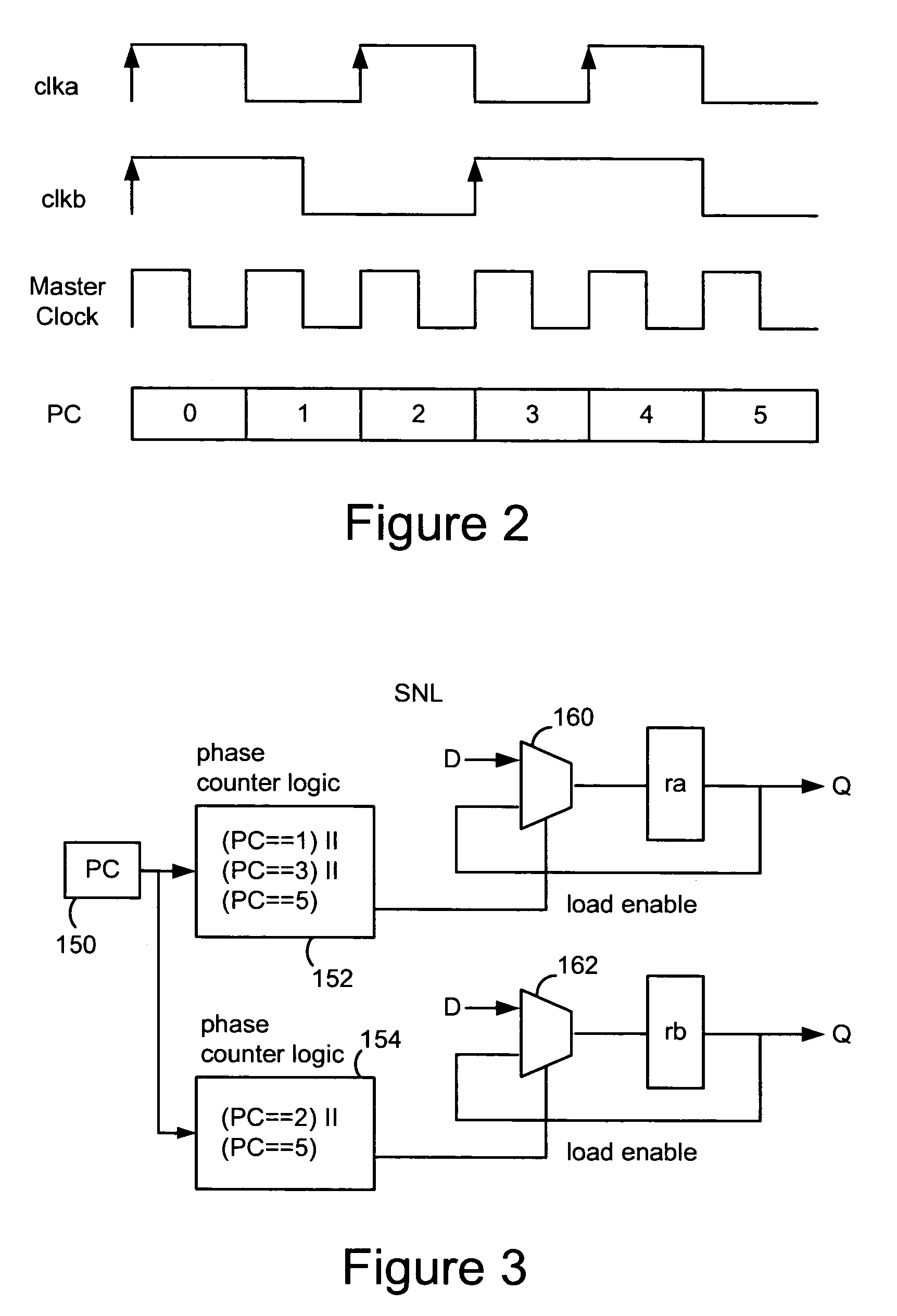Clock model for formal verification of a digital circuit description
a clock model and digital circuit technology, applied in the field of digital circuit design analysis, can solve the problems that the sole use of highly detailed simulation and modeling cannot be used to investigate all possible errors at all times for all states of a circuit, and the verification process itself is a huge and complex task, so as to reduce or eliminate inaccuracies and other issues
- Summary
- Abstract
- Description
- Claims
- Application Information
AI Technical Summary
Benefits of technology
Problems solved by technology
Method used
Image
Examples
Embodiment Construction
[0007]A preferred embodiment of the invention uses an edge clock model to capture states from a logic-level simulation of a circuit description for formal verification of a circuit description. The states are captured at clock edges, or transitions, according to an edge clock model based on a clock specification for the circuit description. The captured states can be used in verification or for other aspects of testing, simulation or analysis. This approach helps to reduce or eliminate inaccuracies and other issues with other clock models such as a phase clock model.
[0008]In one embodiment the invention provides a method for performing a formal verification of a circuit description, the method comprising: capturing state information by using clock edges from clock signals defined in the circuit description; and using the captured states in the formal verification.
[0009]In one embodiment, a phase clock model can be used in addition to the edge clock model. In another embodiment, the ...
PUM
 Login to View More
Login to View More Abstract
Description
Claims
Application Information
 Login to View More
Login to View More - R&D
- Intellectual Property
- Life Sciences
- Materials
- Tech Scout
- Unparalleled Data Quality
- Higher Quality Content
- 60% Fewer Hallucinations
Browse by: Latest US Patents, China's latest patents, Technical Efficacy Thesaurus, Application Domain, Technology Topic, Popular Technical Reports.
© 2025 PatSnap. All rights reserved.Legal|Privacy policy|Modern Slavery Act Transparency Statement|Sitemap|About US| Contact US: help@patsnap.com



